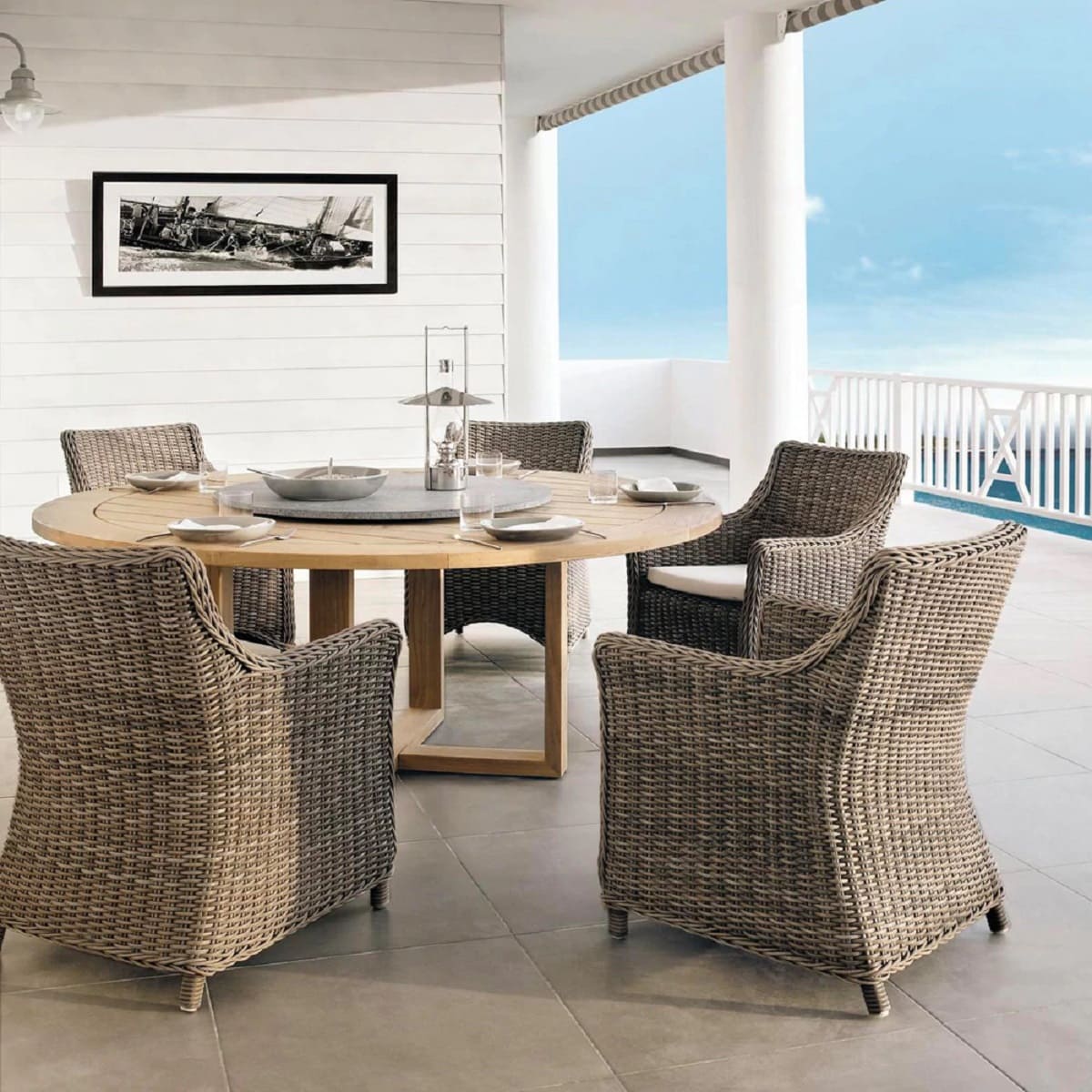

Tableware
How To Construct Wicker Dining Chairs
Modified: January 18, 2024
Learn how to construct beautiful wicker dining chairs for your tableware collection. Find step-by-step instructions and tips for creating your own unique pieces.
(Many of the links in this article redirect to a specific reviewed product. Your purchase of these products through affiliate links helps to generate commission for Storables.com, at no extra cost. Learn more)
Introduction to Wicker Dining Chairs
When it comes to selecting furniture for your dining space, wicker dining chairs can be an excellent choice. Wicker, widely known for its durability and natural aesthetic, has become increasingly popular in recent years. Whether you are looking to revamp your dining area or are embarking on a DIY project, constructing your own wicker dining chairs can be a rewarding and satisfying endeavor.
Wicker dining chairs offer a unique blend of comfort, style, and versatility. They can complement various interior design themes, from rustic farmhouse to contemporary chic. The intricate weave pattern adds texture and visual interest to your dining space, making it stand out from the ordinary.
One of the major benefits of opting for wicker dining chairs is their durability. Wicker is made from natural materials, such as rattan, bamboo, or reed, which are known for their strength and resilience. This makes wicker dining chairs suitable for both indoor and outdoor use. They are built to withstand the test of time, making them a wise long-term investment.
Moreover, wicker dining chairs are highly versatile. They come in a wide range of styles, shapes, and sizes, allowing you to find the perfect match for your dining table and overall decor. You can choose from sleek and modern designs or opt for a more traditional and rustic look. With wicker dining chairs, you have the freedom to customize and create a dining space that reflects your personal style.
Before diving into the construction process, there are a few factors you should consider to ensure the success of your wicker dining chair project. Firstly, determine the desired size and height of the chairs to ensure they are suitable for your dining table. Additionally, consider the weight capacity and comfort level of the chairs, especially if you anticipate frequent use.
Furthermore, think about the overall look and design you want to achieve. Take into account the existing decor and color scheme in your dining area, and choose a wicker weave pattern and chair frame that complements the space harmoniously.
With careful planning and the right tools and materials, constructing your own wicker dining chairs can be a fulfilling and enjoyable experience. In the following sections, we will guide you through the step-by-step process and provide maintenance tips to help you prolong the lifespan of your wicker dining chairs.
Key Takeaways:
- Wicker dining chairs offer a timeless and versatile seating option, providing durability, comfort, and natural aesthetic appeal. Constructing and maintaining them involves careful planning, selection of materials, and attention to detail.
- Proper maintenance and care are essential for preserving the beauty and functionality of wicker dining chairs. Regular cleaning, preventive measures, and proper storage during offseasons help extend their lifespan and ensure long-lasting enjoyment.
Read more: How To Construct Dining Room Chairs
What are Wicker Dining Chairs?
Wicker dining chairs are seating options that are constructed using a weaving technique with natural materials such as rattan, bamboo, or reed. The process involves interlacing these materials to create a sturdy and visually appealing chair frame.
Wicker itself refers to the weaving process rather than the material used. However, it is commonly associated with natural materials due to their flexibility and strength. Dining chairs made from wicker offer a charming and stylish addition to any dining space.
One of the distinguishing features of wicker dining chairs is the intricate weave pattern. The weaving technique creates a unique visual texture and adds depth and character to the chairs. This, in turn, gives your dining area a distinctive and inviting atmosphere.
Wicker dining chairs come in various designs and styles to suit different tastes and interior aesthetics. From traditional rattan designs to modern synthetic wicker materials, there is a wide range of options available on the market. This allows you to choose the perfect wicker dining chairs that align with your desired look and feel.
Moreover, wicker dining chairs are not limited to indoor use. They can also be used in outdoor dining areas, as the natural materials used in their construction are often weather-resistant. This makes them a versatile choice for patios, decks, or gardens, adding a touch of nature to your outdoor entertaining space.
Another advantage of wicker dining chairs is their comfort. The natural flexibility of the woven materials provides a slight give when you sit on them, ensuring a comfortable seating experience. Additionally, wicker chairs often come with cushions, offering extra support and enhancing the overall comfort level.
Wicker dining chairs are also known for their durability. The natural materials used are strong and robust, making the chairs long-lasting and capable of withstanding regular use. With proper care and maintenance, wicker dining chairs can retain their beauty and functionality for many years.
Overall, wicker dining chairs combine style, comfort, and durability, making them a popular choice for many homeowners. Whether you prefer a classic or contemporary look, wicker dining chairs offer a timeless appeal that can enhance the ambiance of your dining space.
Benefits of Choosing Wicker Dining Chairs
Choosing wicker dining chairs for your dining space comes with a multitude of benefits. From their natural aesthetic appeal to their durability, wicker dining chairs offer a range of advantages that make them a popular choice among homeowners. Here are some key benefits of choosing wicker dining chairs:
- Timeless and Versatile: Wicker dining chairs have a timeless charm that can effortlessly blend with various interior design styles. Whether you have a traditional, contemporary, or eclectic dining area, wicker chairs can complement your decor. Their versatile nature allows you to mix and match them with different types of dining tables and other furniture pieces.
- Natural Aesthetic: Wicker dining chairs add a touch of nature to your dining space. The use of natural materials like rattan or bamboo brings warmth and organic beauty to your surroundings. Additionally, the intricately woven patterns create visual interest and texture, making your dining area more visually appealing.
- Durability: Wicker dining chairs are built to last. The natural materials used in their construction, such as rattan, are known for their strength and resilience. This makes wicker chairs capable of withstanding regular use and the rigors of daily life. With proper care, they can maintain their integrity and beauty for many years.
- Comfort: Wicker dining chairs provide a comfortable seating option for your dining area. The woven materials used in their construction offer a slight give, which allows for a more relaxed and supportive seating experience. In addition, many wicker dining chairs come with cushions that add an extra layer of comfort.
- Indoor and Outdoor Use: Wicker dining chairs are suitable for both indoor and outdoor settings. While they make an excellent addition to your indoor dining space, they are also weather-resistant and can withstand the elements. This versatility allows you to use them in your outdoor dining area, patio, or even garden, adding style and functionality to your outdoor entertaining spaces.
- Eco-Friendly: Wicker dining chairs are environmentally friendly options. The natural materials used in their construction are sustainable and renewable. Opting for wicker chairs for your dining area means making a conscious choice to reduce your carbon footprint and contribute to a greener lifestyle.
Overall, the benefits of choosing wicker dining chairs make them an attractive option for homeowners. Their timeless appeal, natural beauty, durability, comfort, and versatility make them well-suited for any dining space. Whether you are looking to enhance your indoor dining area or create an inviting outdoor entertaining space, wicker dining chairs offer a stylish and sustainable solution.
Factors to Consider Before Constructing Wicker Dining Chairs
Before you embark on the journey of constructing your own wicker dining chairs, there are several factors to consider to ensure a successful project. Taking the time to plan and prepare will help you achieve the desired results. Here are some important factors to keep in mind:
- Design and Style: Determine the design and style of the wicker dining chairs you want to construct. Consider the overall aesthetic and theme of your dining area and choose a design that complements it. Whether you prefer a traditional or modern look, understanding your preferred design style will guide you in selecting the appropriate materials and techniques.
- Size and Dimensions: Measure the available space in your dining area and determine the appropriate size and dimensions for your wicker dining chairs. Consider the height of your dining table to ensure the chairs are proportionate and comfortable. Additionally, take into account the number of chairs you plan to construct to ensure they fit properly in your dining space.
- Budget: Set a budget for your wicker dining chair project. Consider the cost of materials, tools, and any additional accessories or embellishments you may want to incorporate. Having a clear budget in mind will help you make informed decisions and avoid overspending during the construction process.
- Skill Level: Assess your skill level and experience in DIY projects. Constructing wicker dining chairs requires some level of craftsmanship and attention to detail. If you are a beginner, consider starting with simpler chair designs and gradually progress to more intricate patterns as you gain confidence and expertise.
- Tools and Materials: Gather the necessary tools and materials for constructing wicker dining chairs. This includes tools such as wire cutters, pliers, and a staple gun, as well as materials like rattan reeds, bamboo rods, or synthetic wicker. Research and ensure you have all the required items before beginning the construction process.
- Time and Commitment: Building wicker dining chairs requires time and patience. Consider the amount of time you can dedicate to the project and set realistic expectations. Building wicker dining chairs can be a rewarding experience, but it is important to be committed to the process to ensure the best possible outcome.
By taking these factors into consideration, you will be better prepared to embark on your wicker dining chair construction project. Planning ahead and understanding your preferences, budget, skill level, and the necessary tools and materials will set the foundation for a successful and satisfying DIY endeavor.
Tools and Materials Required
Before you can begin constructing your wicker dining chairs, it is essential to gather the necessary tools and materials. Here is a list of the common tools and materials required for constructing wicker dining chairs:
-
Tools:
- Wire cutters
- Pliers
- Staple gun
- Scissors
- Tape measure
- Clamps
-
Materials:
- Rattan reeds or bamboo rods
- Wicker or cane webbing
- Screws or nails
- Wood glue
- Foam or cushions (optional)
- Fabric for cushions (optional)
These tools and materials form the foundation of your wicker dining chair construction project. Depending on the specific design and style you have chosen, additional tools or materials may be required. It is always recommended to research and plan ahead to ensure you have all the necessary items before you begin the construction process.
Read more: How To Mix Dining Chairs
Essential Tools for Constructing Wicker Dining Chairs
Constructing wicker dining chairs requires a set of essential tools to ensure a smooth and successful construction process. These tools are essential for working with wicker materials and creating a sturdy and visually appealing chair frame. Here are the key tools you will need:
- Wire Cutters: Wire cutters are essential for cutting and trimming the wicker materials. They allow you to easily cut through the rattan reeds or bamboo rods to the desired lengths.
- Pliers: Pliers are useful for bending and shaping the wicker materials. They provide a secure grip and help in manipulating the materials to create the desired weave pattern.
- Staple Gun: A staple gun is necessary for attaching the wicker materials to the chair frame. It is used to staple the materials securely in place, ensuring a strong and durable construction.
- Scissors: Scissors are handy for cutting the wicker or cane webbing to the appropriate size. They are also useful for trimming any excess materials.
- Tape Measure: A tape measure is essential for measuring and marking the dimensions of the chair frame and the wicker materials. It ensures accurate and precise cuts and placements.
- Clamps: Clamps are beneficial for holding the wicker materials in place while you work on weaving and securing them to the chair frame. They provide stability and prevent the materials from shifting during the construction process.
These essential tools will make the construction process more efficient and help you achieve professional-looking results. It is important to invest in good quality tools to ensure they are durable and can withstand the demands of the project.
Additionally, it is recommended to have a well-equipped toolbox that includes other basic tools like a hammer, screwdriver, and level. These tools may not be directly related to working with wicker materials but are essential for assembling the chair frame and attaching any additional components, such as cushions or fabric covers.
Before you begin the construction process, familiarize yourself with the tools and ensure they are in good working condition. Follow the manufacturer’s instructions for proper usage and safety guidelines. Taking the time to gather the essential tools and having them readily available will make the construction process more enjoyable and help you create beautiful and functional wicker dining chairs.
Recommended Materials for Wicker Dining Chair Construction
When it comes to constructing wicker dining chairs, choosing the right materials is crucial for achieving a durable and visually appealing result. The materials you select will determine the overall look, feel, and longevity of your dining chairs. Here are some recommended materials to consider:
- Rattan Reeds: Rattan reeds are a popular choice for constructing wicker dining chairs. They are flexible, lightweight, and durable, making them perfect for weaving the seat and backrest of the chairs. Rattan reeds are available in various thicknesses, allowing you to choose the appropriate size for your design and comfort level.
- Bamboo Rods: Bamboo rods are another excellent option for constructing wicker dining chairs. They offer natural strength and rigidity, making them ideal for creating the chair frame and providing structural support. Bamboo rods come in different diameters and can be cut to the desired length for your specific chair dimensions.
- Wicker or Cane Webbing: Wicker or cane webbing can be used to create the seat and backrest of the dining chairs. This material is pre-woven and provides a smooth and comfortable seating surface. It is often made from natural or synthetic materials and comes in various widths and designs, allowing for customization and creativity.
- Screws or Nails: Screws or nails are essential for securing the various components of the wicker dining chair together, such as attaching the chair frame to the seat and backrest. Opt for quality screws or nails that are suitable for wooden surfaces and provide strong and secure connections.
- Wood Glue: Wood glue is important for reinforcing the joints and connections of the chair frame. It helps to create a firm and stable construction that can withstand regular use. Look for a durable wood glue that dries clear and provides a strong bond.
- Foam or Cushions (optional): If you desire added comfort, you can incorporate foam or cushions into your wicker dining chairs. Foam provides support and cushioning, enhancing the seating experience. Cushions can be covered in fabric that complements your dining area’s style, adding an extra layer of comfort and visual appeal.
- Fabric for Cushions (optional): If you choose to add cushions to your wicker dining chairs, you will need fabric to cover them. Select a durable fabric that is easy to clean and maintain. Consider the color and pattern of the fabric to ensure it coordinates with your dining space’s overall design scheme.
Choosing high-quality and appropriate materials is essential for constructing sturdy and beautiful wicker dining chairs. Consider your desired aesthetic, durability requirements, and comfort preferences when selecting the materials.
Step-by-Step Guide to Constructing Wicker Dining Chairs
Now that you have gathered the necessary tools and materials, let’s walk through the step-by-step process of constructing wicker dining chairs:
-
Step 1: Preparing the Wicker Materials
Measure and cut the rattan reeds or bamboo rods to the desired lengths for the seat and backrest of the chairs. Soak the materials in water for about 30 minutes to increase their flexibility and make them easier to work with.
-
Step 2: Creating the Chair Frame
Use the bamboo rods to construct the chair frame. Cut the rods to the required dimensions and join them together using screws or nails. Apply wood glue to reinforce the joints and ensure a sturdy frame.
-
Step 3: Weaving the Wicker Materials onto the Frame
Begin weaving the soaked rattan reeds or bamboo rods through the chair frame. Start from one end and work your way towards the other, alternating the over and under pattern to create the desired weave. Use pliers to secure the ends tightly.
-
Step 4: Securing the Wicker Weave
Once the chair seat and backrest are fully woven, secure the wicker weave to the frame using a staple gun. Carefully staple along the edges of the frame to ensure a tight and secure attachment. Trim any excess reeds or rods if necessary.
-
Step 5: Finishing Touches and Optional Embellishments
If desired, add foam or cushions to the chair seat for added comfort. Cut the foam to fit the seat dimensions and cover it with fabric. Attach the fabric securely to the chair frame using a staple gun. Ensure the fabric aligns with your desired aesthetic and style.
By following these step-by-step instructions, you can construct your own wicker dining chairs with confidence. Remember to take your time, work carefully, and pay attention to detail to achieve the best results. Once completed, your wicker dining chairs will be ready to add a touch of natural beauty and comfort to your dining space.
Preparing the Wicker Materials
Before you begin constructing your wicker dining chairs, it is essential to properly prepare the wicker materials. This step is crucial for ensuring the flexibility and workability of the materials during the weaving process. Here’s a step-by-step guide on how to prepare the wicker materials:
-
Step 1: Measure and Cut
Measure the rattan reeds or bamboo rods to the desired lengths for the seat and backrest of the chairs. Use a tape measure to ensure accurate measurements. If needed, mark the measurements on the materials using a pencil or marker.
Using wire cutters, carefully cut the rattan reeds or bamboo rods to the predetermined lengths. Make sure to apply steady pressure to ensure clean and even cuts.
-
Step 2: Soaking the Materials
Before weaving the materials, it is essential to soak them in water. Fill a bucket or basin with water and place the rattan reeds or bamboo rods inside. Ensure that the materials are fully submerged.
Allow the materials to soak for approximately 30 minutes. This process helps soften the fibers, making them more flexible and easier to work with during the weaving process.
-
Step 3: Drying the Materials
After soaking, remove the rattan reeds or bamboo rods from the water and shake off any excess moisture. Lay them out on a clean and dry surface, such as a towel or drying rack.
Allow the materials to air dry completely before proceeding with the construction process. This ensures that the materials regain their rigidity and strength, setting them up for successful weaving and attachment to the chair frame.
By following these preparation steps, you will optimize the flexibility and workability of the wicker materials, enabling a smoother weaving process. Soaking the materials softens them, making it easier to shape and manipulate them into the desired weave pattern. Drying the materials thoroughly restores their strength and rigidity, allowing for secure attachment to the chair frame.
Remember to handle the wicker materials with care during the preparation phase to avoid any damage. Use appropriate tools, such as wire cutters, to ensure clean and precise cuts. Additionally, ensure that the materials are completely dry before moving on to the next steps in constructing your wicker dining chairs.
By taking the time to properly prepare the wicker materials, you will set a solid foundation for the weaving and construction process. This attention to detail will contribute to the overall durability and aesthetic appeal of your wicker dining chairs. Once the materials are prepared, you can proceed to the next step of creating the chair frame.
Read also: 9 Best Wicker Patio Chairs For 2024
Creating the Chair Frame
Once you have prepared the wicker materials, the next step in constructing your wicker dining chairs is creating the chair frame. The frame provides structure and support for the chair’s seat and backrest, and it is important to build a sturdy foundation. Here’s a step-by-step guide on how to create the chair frame:
-
Step 1: Gather the Necessary Materials
Collect the bamboo rods, which will serve as the main component for the chair frame. Ensure that you have enough rods to create the desired size and shape of the chair.
-
Step 2: Measure and Cut the Bamboo Rods
Using a tape measure, determine the length needed for each part of the chair frame, such as the sides, back, and legs. Mark the measurements on the bamboo rods using a pencil or marker.
Carefully cut the rods using wire cutters, following the marked measurements. Apply steady pressure to ensure clean and even cuts.
-
Step 3: Joining the Rods
Begin by positioning the rods for the sides of the chair frame. Depending on the design, you may need to create an angle or curve for the backrest or armrests.
Overlap the ends of the rods at the desired connection points. Use screws or nails to secure the joints, creating a strong and stable frame. Apply wood glue at the joints for added reinforcement and durability.
Continue the process for the other parts of the chair frame, such as the legs or armrests. Ensure that all connections are secure and aligned properly.
-
Step 4: Check for Stability
Once the chair frame is fully assembled, check for stability and make any necessary adjustments. Ensure that the frame is level and does not wobble or shift.
Apply additional wood glue or screws if needed to strengthen any weak points or connections.
By following these steps, you will create a solid and stable chair frame for your wicker dining chairs. The bamboo rods provide strength and rigidity, ensuring that your chairs can support the weight of a person and withstand regular use.
When constructing the chair frame, attention to detail is crucial. Take your time to measure and cut the bamboo rods accurately, ensuring that they fit together seamlessly. Secure the joints tightly with screws or nails, and reinforce them with wood glue for added stability.
Remember to double-check the stability of the chair frame before moving on to the next steps of weaving the wicker materials onto the frame. A sturdy and well-built frame sets the foundation for a durable and long-lasting set of wicker dining chairs.
With the chair frame completed, you are ready for the next step of weaving the wicker materials onto the frame to create the seat and backrest of the chairs.
When constructing wicker dining chairs, make sure to use high-quality wicker material and sturdy frame to ensure durability and longevity. Additionally, pay attention to the weaving pattern for a professional finish.
Weaving the Wicker Materials onto the Frame
With the chair frame constructed, the next step in building your wicker dining chairs is weaving the wicker materials onto the frame. This process involves interlacing the prepared wicker materials through the frame to create the seat and backrest of the chairs. Here’s a step-by-step guide on how to weave the wicker materials:
-
Step 1: Start with the Seat
Begin by weaving the wicker materials through the frame to create the seat of the chair. Choose the end of the frame and carefully insert the rattan reeds or bamboo rods vertically through the frame.
Once you have inserted the first reed, twist it around the frame and bring it back through the frame, creating an “over and under” pattern. The “over and under” pattern provides stability and ensures a secure weave.
Continue this weaving pattern, working your way across the chair frame, until you reach the other end. Maintain even spacing between the reeds to create an aesthetically pleasing and comfortable seat.
-
Step 2: Weave the Backrest
Next, move on to weaving the wicker materials for the backrest of the chair. Start by inserting a reed vertically through the top of the chair frame, near the back legs or the highest point of the desired backrest height.
Weave the reeds in a horizontal “over and under” pattern, passing them through the vertical reeds at regular intervals. This creates a sturdy and visually appealing backrest design.
Continue weaving the reeds until you have covered the entire backrest area. Ensure that the weaving is tight and secure, making adjustments as needed to achieve the desired look.
-
Step 3: Trim and Secure
Once the seat and backrest are fully woven, trim any excess wicker materials using scissors or wire cutters. Carefully tuck the ends of the reeds into the weave to create a neat and seamless finish.
To ensure that the woven materials are securely attached to the chair frame, use pliers to gently press down on any loose or protruding wicker reeds. This will help tighten the weave and prevent unraveling.
During the weaving process, it is important to maintain even tension and consistently follow the “over and under” pattern. This ensures a uniform weave and a strong, durable construction. Take your time and work methodically to achieve professional-looking results.
As you weave, periodically check the tightness of the weave and make any necessary adjustments to ensure a secure and snug fit. You want the wicker materials to be firmly attached to the chair frame without any loose or sagging sections.
Once the weaving process is complete, you have successfully created the seat and backrest of your wicker dining chairs. The woven wicker materials provide a comfortable and visually appealing surface for seating.
Next, we will move on to securing the wicker weave to the frame to ensure a long-lasting and stable construction.
Securing the Wicker Weave
After weaving the wicker materials onto the chair frame, the next step in constructing your wicker dining chairs is to secure the weave to ensure a stable and long-lasting construction. This process involves ensuring that the woven wicker materials are firmly attached to the frame, preventing any movement or loosening over time. Here’s a step-by-step guide on how to secure the wicker weave:
-
Step 1: Inspect the Weave
Before securing the wicker weave, thoroughly inspect the entire surface to ensure it is tight and uniform. Check for any loose or irregularly woven areas that may require additional attention.
If you notice any loose or sagging sections, use pliers to gently tighten and adjust the weave, pressing down on the wicker rods or reeds to secure them in place.
-
Step 2: Gather the Necessary Tools
Prepare the tools needed for securing the wicker weave. Depending on the type of chair frame and materials used, you may need a staple gun, screws, or nails. Ensure that you have the appropriate tools handy for the next steps.
-
Step 3: Attach the Wicker Weave to the Frame
Using a staple gun, carefully staple the wicker materials to the chair frame along the edges. Start at one side and work your way around, spacing the staples evenly to ensure a secure attachment.
Alternatively, if your chair frame allows, you can use screws or nails to secure the wicker weave to the frame. Make sure to select the appropriate size and type of screws or nails that will properly anchor the wicker materials while ensuring they do not pierce through the surface.
-
Step 4: Reinforce Weak Areas
Pay close attention to any previously identified loose or weak areas of the wicker weave. Apply additional staples, screws, or nails to reinforce these sections and ensure they are tightly secured to the chair frame.
If using staples, be careful not to staple too close to the edge, as this may cause the wicker materials to split or tear. Leave a small gap between the staple and the edge of the frame for a secure yet gentle hold.
By following these steps, you will secure the woven wicker materials to the chair frame, creating a stable and durable construction that can withstand regular use. The securing process provides added strength and prevents any shifting or loosening of the wicker weave over time.
Take your time and work methodically to ensure that each staple, screw, or nail is properly placed and tightly secured. Double-check that all areas of the weave are securely attached to the frame, paying extra attention to any previously identified weak spots.
Once you have completed the process of securing the wicker weave, your wicker dining chairs are one step closer to being fully constructed. The weave is now firmly attached to the frame, providing a solid foundation for the finished chairs.
In the next step, we will explore the finishing touches and optional embellishments you can add to your wicker dining chairs to enhance their aesthetics and comfort.
Finishing Touches and Optional Embellishments
With the construction of your wicker dining chairs nearly complete, it’s time to add the finishing touches and optional embellishments. These final details can elevate the aesthetics and comfort of your chairs, making them even more inviting. Here are some ideas:
- Finishing the Frame: Depending on your preference, you can leave the chair frame as is for a natural and minimalist look. Alternatively, consider staining or painting the frame to match your desired aesthetic. Choose a color that complements the other elements of your dining space.
- Cushions: Enhance the comfort of your wicker dining chairs by adding cushions. Select cushions that are the appropriate size and thickness for your chairs. Look for durable fabrics that can withstand regular use and are easy to clean. Choose patterns or colors that coordinate with your dining area’s decor.
- Pillows: Decorative throw pillows can add a touch of style and coziness to your wicker dining chairs. Select pillows that complement the colors and patterns in your dining area, creating a cohesive look. Have fun with different textures and designs to add visual interest.
- Seat Covers: If you prefer a different look for your chairs, consider using seat covers. These can be made from fabric or woven materials that add texture and variety to the seating surface. Choose seat covers that are compatible with the size and shape of your chair seats.
- Embellishments: Add unique embellishments to personalize your wicker dining chairs. Consider attaching decorative elements, such as ribbons, bows, or tassels, to the backrest or arms. Beads, charms, or small trinkets can also be woven into the wicker materials for an extra touch of visual interest.
These finishing touches and optional embellishments allow you to customize your wicker dining chairs to match your personal style and complement your dining space. Experiment with different combinations to create the desired ambiance and comfort level.
Read more: How To Assemble Dining Chairs
Maintenance and Care Tips for Wicker Dining Chairs
To ensure the longevity and beauty of your wicker dining chairs, proper maintenance and care are essential. Here are some valuable tips:
- Cleaning: Regularly dust your wicker dining chairs using a soft brush or cloth to remove any loose dirt or debris. For deeper cleaning, use a mild soap solution and a soft brush to gently scrub the wicker surfaces. Rinse with water and allow them to air dry completely before using.
- Preventing Damage: Avoid exposing your wicker dining chairs to excessive sunlight, as it can cause the materials to fade or become brittle over time. Additionally, protect them from extreme heat or cold, as rapid temperature changes can lead to warping or cracking.
- Spills and Stains: Immediately address spills or stains by blotting them with a clean cloth or sponge. Avoid rubbing, as it can spread the stain further. If necessary, use a mild detergent solution to clean the affected area. Rinse thoroughly and allow it to dry completely.
- Indoor vs. Outdoor Use: If using your wicker dining chairs outdoors, consider covering or storing them during inclement weather to protect them from excessive moisture. Apply a protective sealant to outdoor wicker furniture to prolong its life and safeguard it from the elements.
- Rotating and Fluffing: If your wicker dining chairs have cushions or pillows, periodically rotate them to ensure even wear. Fluff up the pillows to maintain their shape and plumpness.
By following these maintenance and care tips, you can keep your wicker dining chairs looking their best for years to come. Regular cleaning and protection from environmental factors will help preserve the color, structural integrity, and overall quality of the chairs.
With proper maintenance, your wicker dining chairs will continue to provide a comfortable and stylish seating option for your dining area, allowing you to enjoy many memorable meals and gatherings with family and friends.
Cleaning and Dusting Techniques for Wicker Dining Chairs
To maintain the beauty and longevity of your wicker dining chairs, regular cleaning and dusting are essential. Wicker materials require specific care to ensure they remain in good condition. Here are some techniques to effectively clean and dust your wicker dining chairs:
- Dust Regularly: Use a soft-bristle brush or a clean, dry cloth to regularly dust your wicker dining chairs. Gently brush or wipe away any loose dirt, dust, or debris from the surface. Pay attention to the crevices and weave pattern to ensure a thorough cleaning.
- Vacuum with a Brush Attachment: If your wicker dining chairs have hard-to-reach areas or fine dust particles, you can vacuum them using a brush attachment. Set the vacuum to a low suction level and carefully maneuver the brush attachment over the wicker surfaces to remove any stubborn dust.
- Mild Soap Solution: For deeper cleaning, prepare a mild soap solution using warm water and a gentle detergent or dish soap. Avoid using harsh chemicals or abrasive cleaners, as they can damage the wicker materials. Test the soap solution on a small, inconspicuous area of the chair first to ensure it doesn’t cause any discoloration or unwanted effects.
- Spot Cleaning: If you encounter any spills or stains on your wicker dining chairs, it’s important to address them promptly. Blot the area with a clean cloth or sponge to absorb excess moisture. Then, dip a soft cloth or sponge into the mild soap solution and gently dab the stained area. Be careful not to scrub vigorously, as this may fray or damage the wicker weave. Rinse with clean water and pat dry using a clean towel.
- Air Drying: After cleaning, allow your wicker dining chairs to air dry completely before using them. Place them in a well-ventilated area, away from direct sunlight or heat sources, to prevent any potential warping or damage.
- Wicker-Safe Polish or Oil: Consider applying a wicker-safe polish or oil to protect and revive the natural luster of the wicker materials. Follow the manufacturer’s instructions and apply the polish or oil using a soft cloth. This can help restore the wicker’s shine and provide an extra layer of protection against moisture and UV rays.
It’s important to note that regular cleaning and maintenance can help prevent dirt and dust buildup, as well as minimize the risk of stains or damage to your wicker dining chairs. By following these cleaning and dusting techniques, you can keep your chairs looking clean, fresh, and inviting for years to come.
Remember to always handle your wicker dining chairs with care to avoid causing any damage to the weave pattern or the frame. With proper cleaning and maintenance, your wicker dining chairs will continue to be a beautiful and functional addition to your dining area.
Preventing Wicker Damage and Wear
Wicker dining chairs are known for their durability, but it’s important to take preventive measures to ensure their longevity and keep them looking their best. By following these tips, you can minimize damage and wear on your wicker dining chairs:
- Avoid Direct Sunlight: Prolonged exposure to direct sunlight can cause the wicker materials to fade, become brittle, or even warp over time. To prevent damage, position your wicker dining chairs away from direct sunlight or use curtains or blinds to filter the sunlight if it’s unavoidable.
- Control Humidity and Moisture: Excess humidity or moisture can lead to mold, mildew, or rotting of the wicker materials. Avoid placing your wicker dining chairs in areas with high humidity, such as bathrooms or damp basements. If accidentally exposed to water, promptly dry the affected areas using a clean cloth or allow them to air dry thoroughly.
- Protect from Extreme Temperature Changes: Rapid temperature changes can cause wicker materials to expand or contract, potentially leading to warping or cracking. Avoid placing your wicker dining chairs near heating vents, fireplaces, or air conditioning units. Similarly, avoid exposing them to extreme cold or drafts.
- Use Cushions and Covers: Placing cushions or covers on your wicker dining chairs provides an extra layer of protection against wear and tear. Cushions provide comfort while also protecting the wicker weave from excessive pressure. Additionally, covers can shield the chairs from dust, debris, and accidental spills.
- Handle with Care: When moving or rearranging your wicker dining chairs, be mindful of the materials’ delicate nature. Lift the chairs rather than dragging them across floors to prevent scratches or damage to both the wicker and the flooring surface. Avoid placing heavy or sharp objects on the chair surfaces to prevent indentations or punctures.
- Regularly Rotate and Maintain: To ensure even wear, regularly rotate the wicker dining chairs. This prevents one area from bearing excessive weight or pressure. Additionally, periodically inspect your chairs for any signs of wear or damage. If you notice loose strands, sagging, or unraveling, address the issue promptly to prevent further deterioration.
By implementing these preventive measures, you can protect your wicker dining chairs from unnecessary damage and wear. Proper care and maintenance will help maintain their beauty and functionality, allowing you to enjoy their charm for years to come.
Remember to consult the manufacturer’s guidelines specific to your wicker dining chairs for any additional tips or recommendations on maintenance and care. With regular attention and caution, your wicker dining chairs will continue to be a delightful addition to your dining area, providing comfort and style for countless meals and gatherings.
Storing Wicker Dining Chairs During Offseasons
During offseasons or periods of non-use, it’s important to properly store your wicker dining chairs to protect them from damage and extend their lifespan. Here are some tips for storing wicker dining chairs:
- Clean Thoroughly: Before storing, make sure to clean your wicker dining chairs thoroughly. Remove any dirt, dust, or debris using a brush or soft cloth. For deeper cleaning, consider using a mild soap solution and gentle scrubbing. Allow the chairs to air dry completely before storing them.
- Disassemble if Possible: If your wicker dining chairs have detachable parts, such as cushions or backrests, it’s advisable to disassemble them before storage. This reduces the overall bulk and makes storing more convenient. Pack and store these components separately to prevent damage.
- Choose a Dry Location: Find a dry and well-ventilated storage area for your wicker dining chairs. Avoid locations that are susceptible to excessive moisture or temperature fluctuations, such as basements or attics. Ideally, choose a covered area or use protective covers to shield the chairs from dust and elements.
- Stack or Store Upright: If space allows, stack your wicker dining chairs in a secure and stable manner. Ensure that each chair is placed evenly and securely on top of the other. Alternatively, store them upright side by side to prevent warping or bending of the chair frames.
- Use Protective Covers: Consider using protective covers or storage bags designed specifically for wicker furniture. These covers provide an extra layer of protection from dust, pests, and possible moisture exposure. Make sure the covers fit properly and are tightly secured to prevent any damage from environmental factors.
- Regularly Check and Maintain: Periodically check on your stored wicker dining chairs during the offseason. Look for signs of mold, mildew, or pests and address any issues promptly. If necessary, clean and treat the chairs to prevent damage and extend their lifespan.
By following these storage practices, you can ensure that your wicker dining chairs are well-protected and ready for use when the season permits. Proper storage and care prolong their beauty and functionality, allowing you to enjoy them for years to come.
Read more: How To Recover Dining Chairs
Conclusion
Constructing and maintaining wicker dining chairs is a rewarding and enjoyable experience that can enhance the aesthetic appeal of your dining space. By understanding the benefits of wicker dining chairs, selecting the right tools and materials, and following the step-by-step construction process, you can create durable and stylish seating options.
Remember to prioritize the preventive measures and cleaning techniques to prevent damage and wear on your wicker dining chairs. Regular dusting, proper cleaning, and protection from environmental factors are important for their longevity. By storing your chairs during offseasons and following proper maintenance, you can keep them in optimal condition.
Wicker dining chairs offer a timeless and versatile furniture option that can elevate the ambiance of any dining area. Whether you choose to purchase pre-made wicker dining chairs or embark on a DIY project, they provide a rustic charm and natural aesthetic that will bring warmth and style to your home.
So whether you’re enjoying a cozy family dinner or hosting a grand gathering, your wicker dining chairs will provide comfort, beauty, and a touch of nature to your dining space for years to come.
Key Takeaways from the Article
Throughout this article, we have explored the world of wicker dining chairs, from understanding what they are to constructing and maintaining them. Here are the key takeaways from the information provided:
- Wicker dining chairs are seating options constructed using woven natural materials like rattan, bamboo, or reed.
- Choosing wicker dining chairs offers numerous benefits, including their timeless and versatile design, natural aesthetic appeal, durability, and comfort.
- Before constructing wicker dining chairs, consider factors such as the desired design and style, size and dimensions, budget, your skill level, and the necessary tools and materials.
- Essential tools for constructing wicker dining chairs include wire cutters, pliers, a staple gun, scissors, tape measure, and clamps.
- Recommended materials for wicker dining chair construction include rattan reeds, bamboo rods, wicker or cane webbing, screws or nails, wood glue, foam or cushions (optional), and fabric for cushions (optional).
- Constructing wicker dining chairs involves steps such as preparing the wicker materials by measuring, cutting, soaking, and drying them.
- Creating the chair frame includes gathering the necessary materials, measuring, cutting, joining the rods, and ensuring stability.
- Weaving the wicker materials involves starting with the seat and working in an “over and under” pattern, then moving onto the backrest.
- Securing the wicker weave includes inspecting the weave, gathering the necessary tools, attaching the weave to the frame with staples, screws, or nails, and reinforcing weak areas.
- Finishing touches and optional embellishments include staining or painting the frame, adding cushions or pillows, using seat covers, and incorporating decorative elements.
- Proper maintenance and care involve cleaning and dusting techniques, preventing wicker damage and wear, and storing wicker dining chairs during offseasons.
With these key takeaways in mind, you are now equipped with a comprehensive understanding of wicker dining chairs. From construction to maintenance, you can confidently enjoy the beauty, durability, and comfort that wicker dining chairs bring to your dining space.
Whether you choose to purchase pre-made wicker dining chairs or embark on a DIY project, remember to customize them to your preferences and maintain them regularly. By doing so, your wicker dining chairs will provide a timeless and charming addition to your dining area for years to come.
Final Thoughts on Constructing and Maintaining Wicker Dining Chairs
Constructing and maintaining wicker dining chairs is a rewarding and creative process that allows you to add a touch of natural elegance and comfort to your dining space. Through careful planning, selection of materials, and following the step-by-step construction guide, you can create durable and visually appealing seating options that reflect your personal style.
When constructing wicker dining chairs, it’s important to consider factors such as design, size, budget, and skill level. Taking the time to select the appropriate tools and materials ensures a successful and enjoyable DIY project. Additionally, incorporating optional embellishments allows you to add unique touches and customize your chairs to suit your taste.
Maintaining your wicker dining chairs is crucial for preserving their beauty and functionality. Regular cleaning and dusting help to prevent the buildup of dirt and dust, while preventive measures like protecting the chairs from direct sunlight and extreme temperature changes can extend their lifespan. Storing the chairs properly during offseasons or non-use periods eliminates the risk of damage and maximizes their longevity.
Remember to approach the construction and maintenance of wicker dining chairs with care and attention to detail. Whether they become a focal point of your dining area or complement an existing decor scheme, wicker dining chairs offer a natural and timeless beauty that enhances the ambiance of any space.
By taking the time to construct wicker dining chairs with precision and care, and maintaining them properly over time, you can enjoy not only the comfort they provide but also the sense of accomplishment that comes from creating something with your own hands. So, roll up your sleeves, gather your tools and materials, and embark on the journey of constructing and maintaining your very own wicker dining chairs – a true testament to craftsmanship, style, and the beauty of natural materials.
Frequently Asked Questions about How To Construct Wicker Dining Chairs
Was this page helpful?
At Storables.com, we guarantee accurate and reliable information. Our content, validated by Expert Board Contributors, is crafted following stringent Editorial Policies. We're committed to providing you with well-researched, expert-backed insights for all your informational needs.
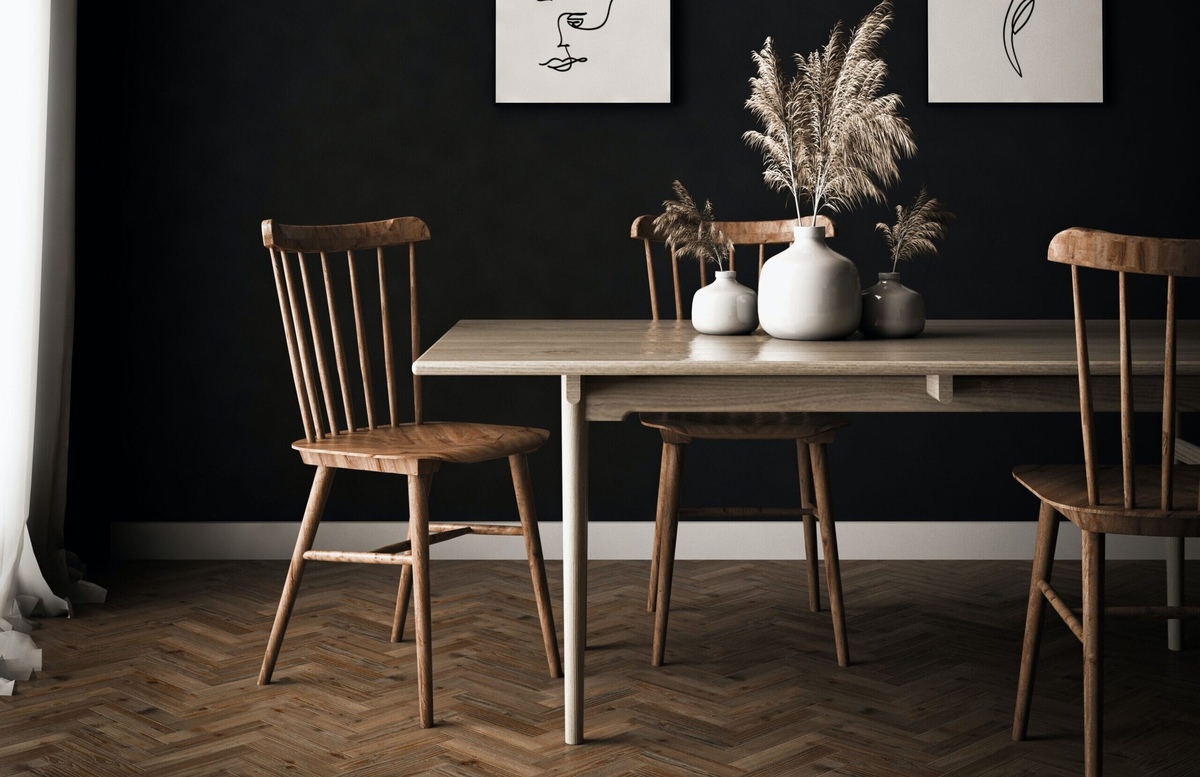
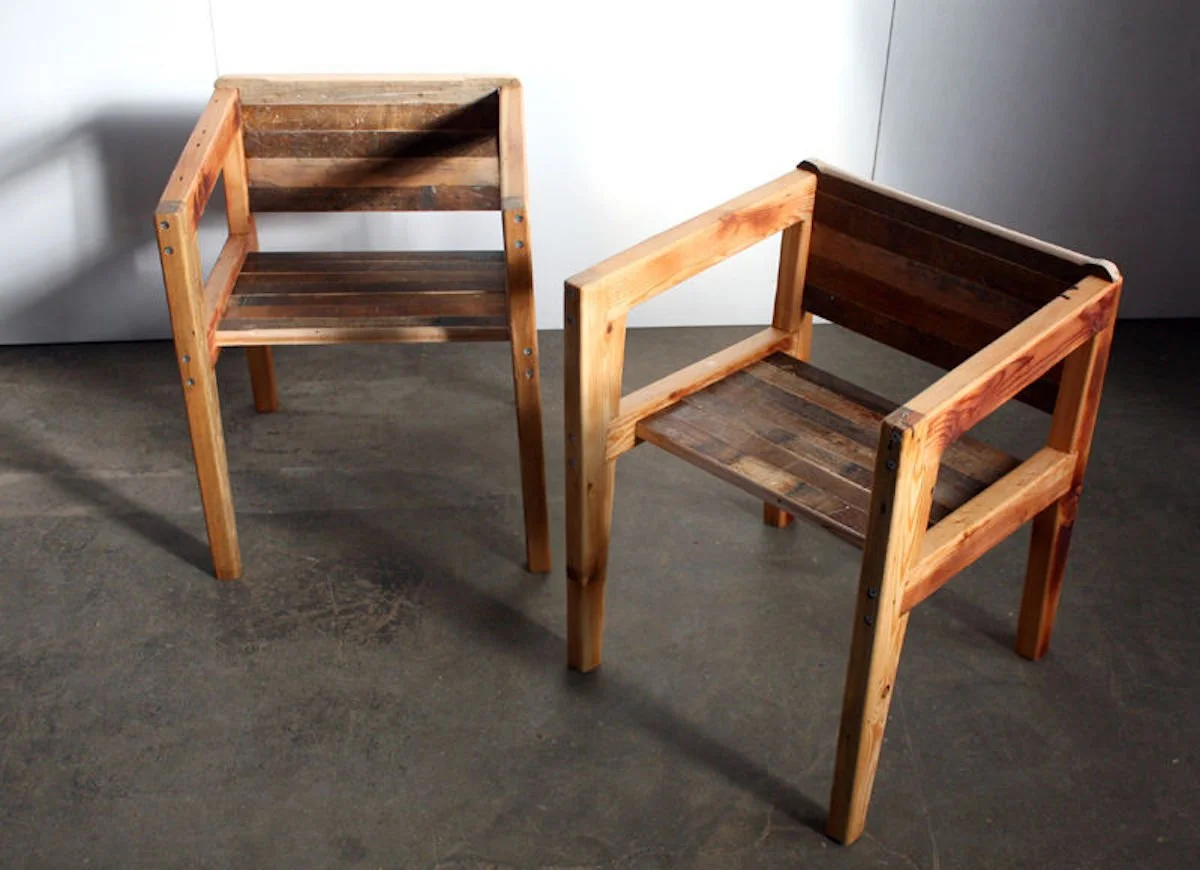
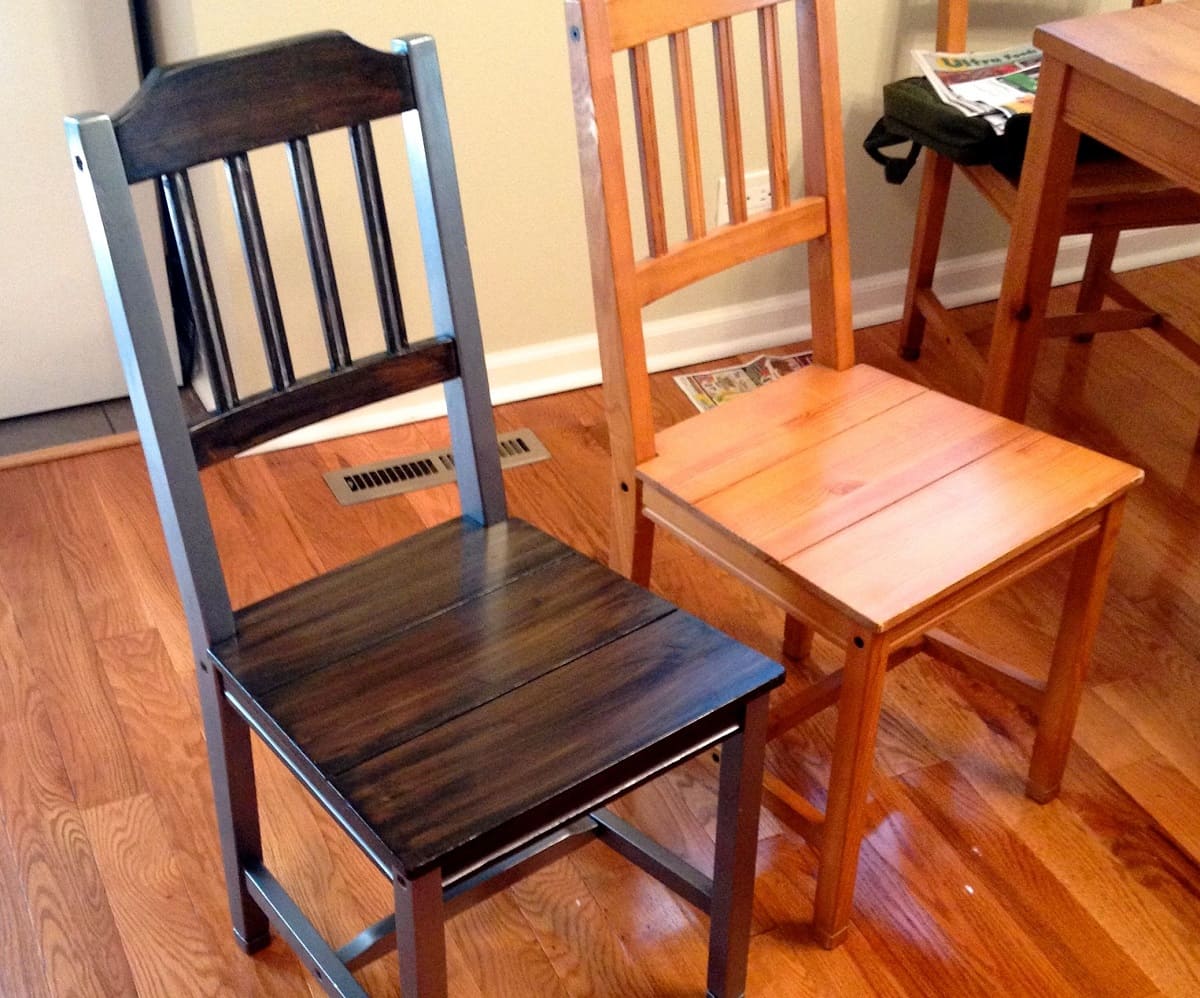
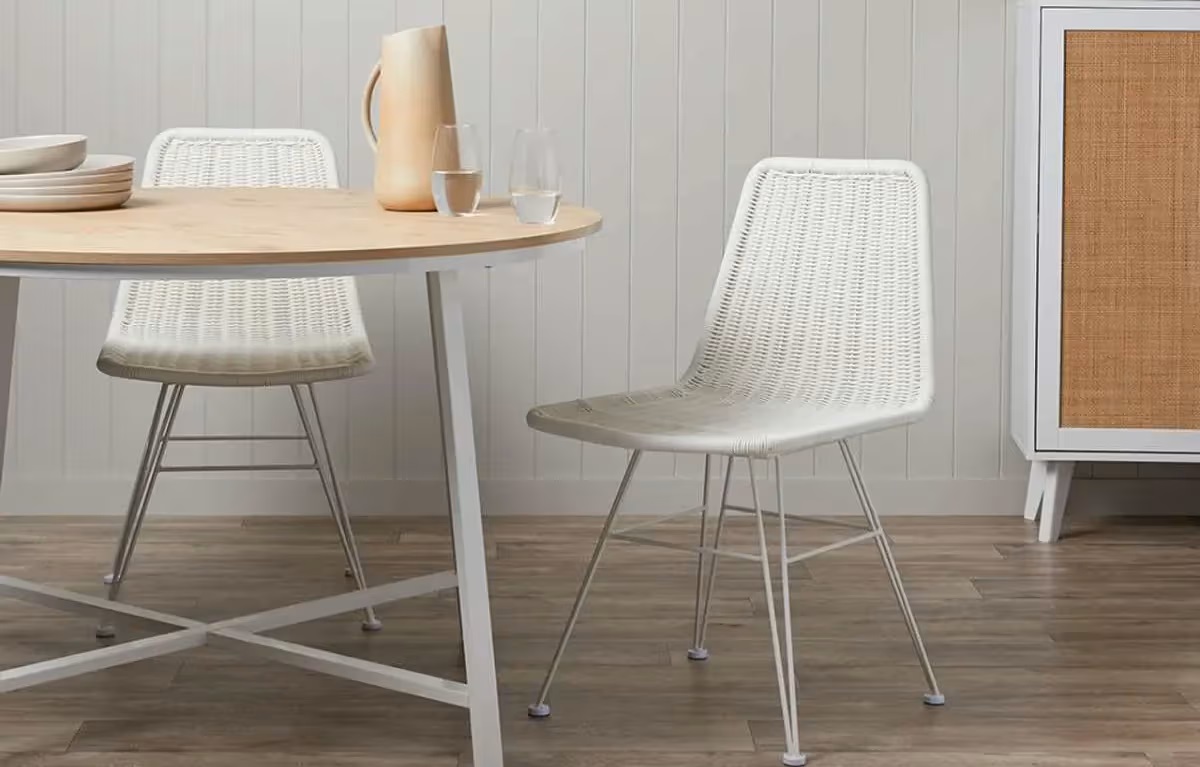
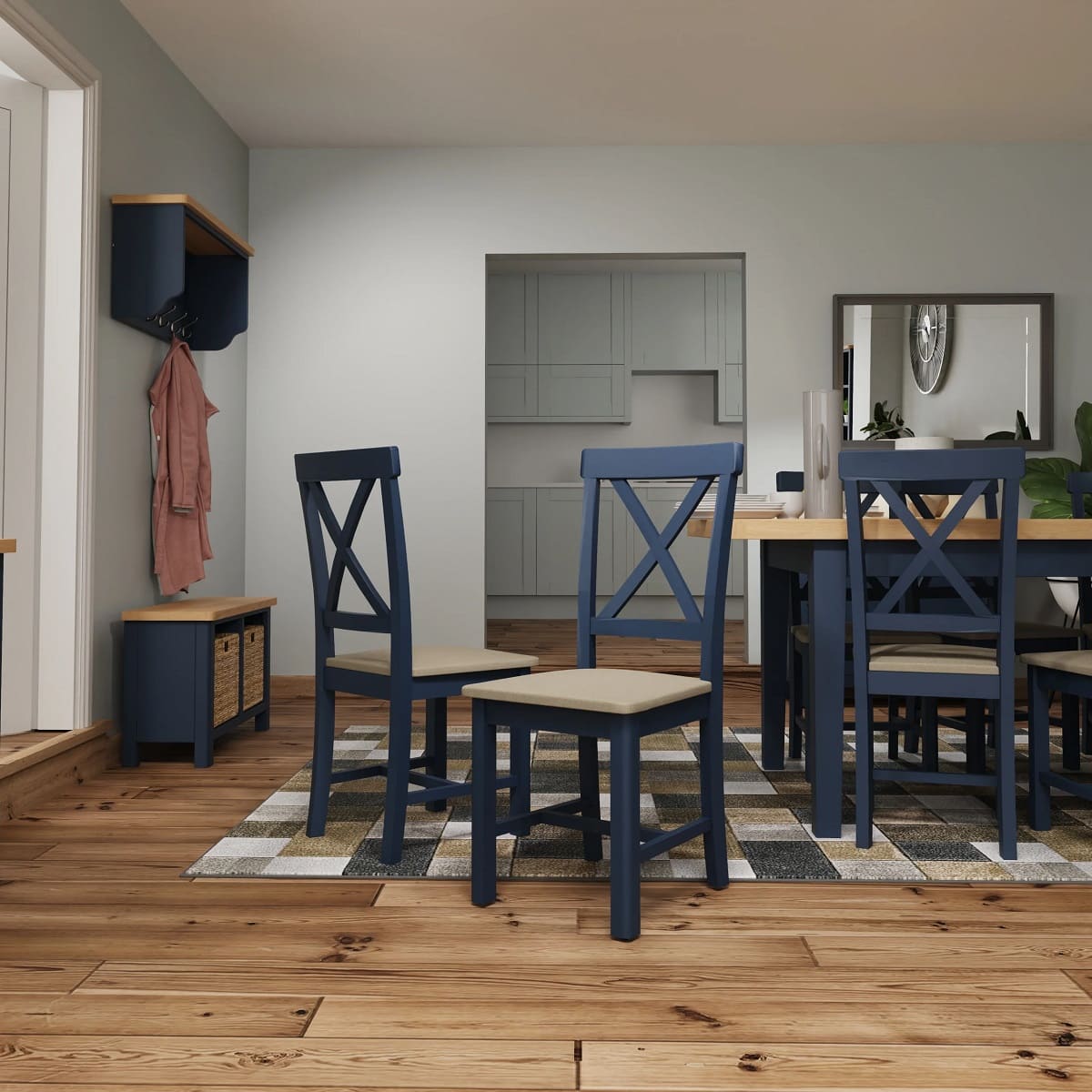
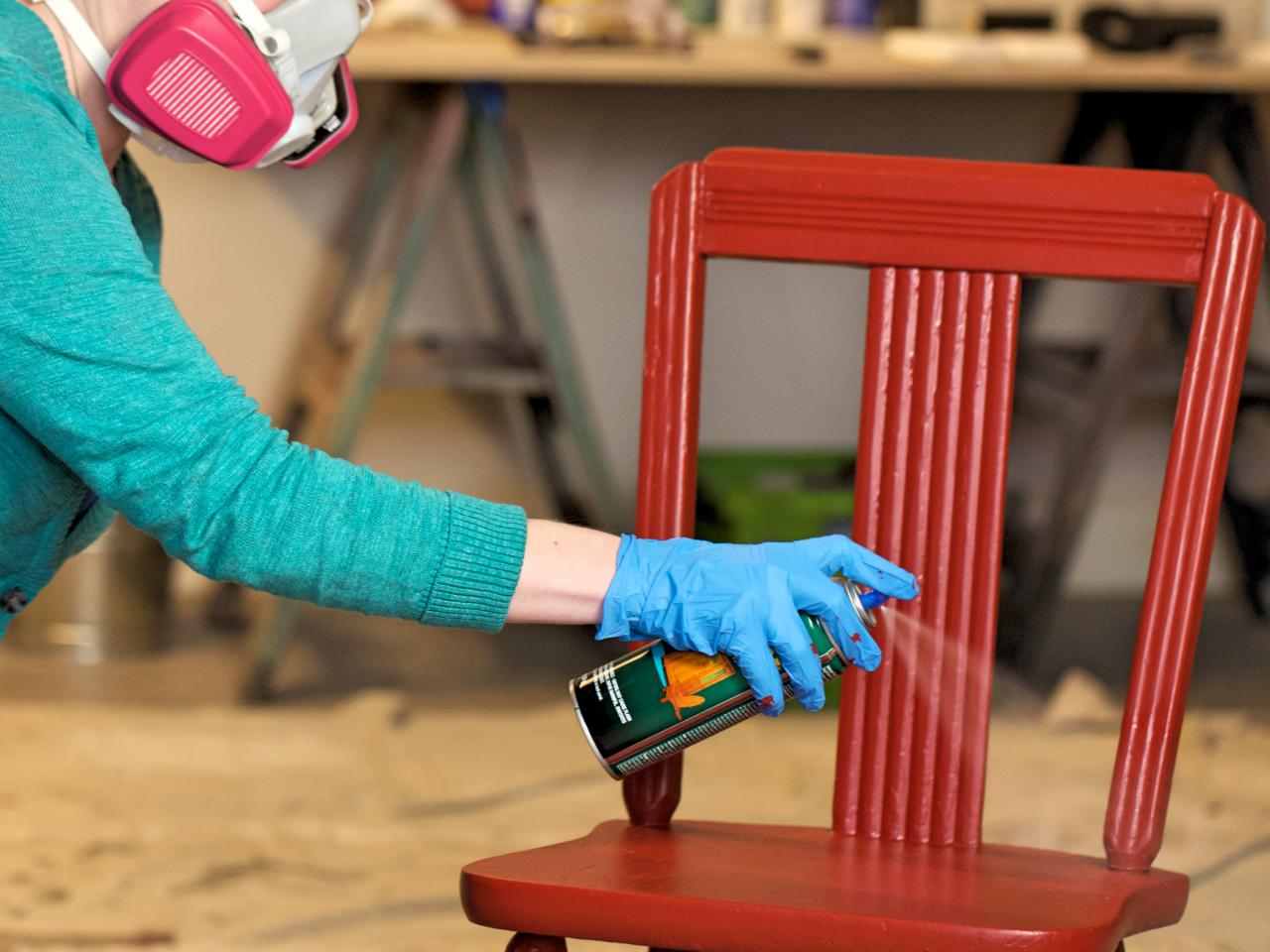
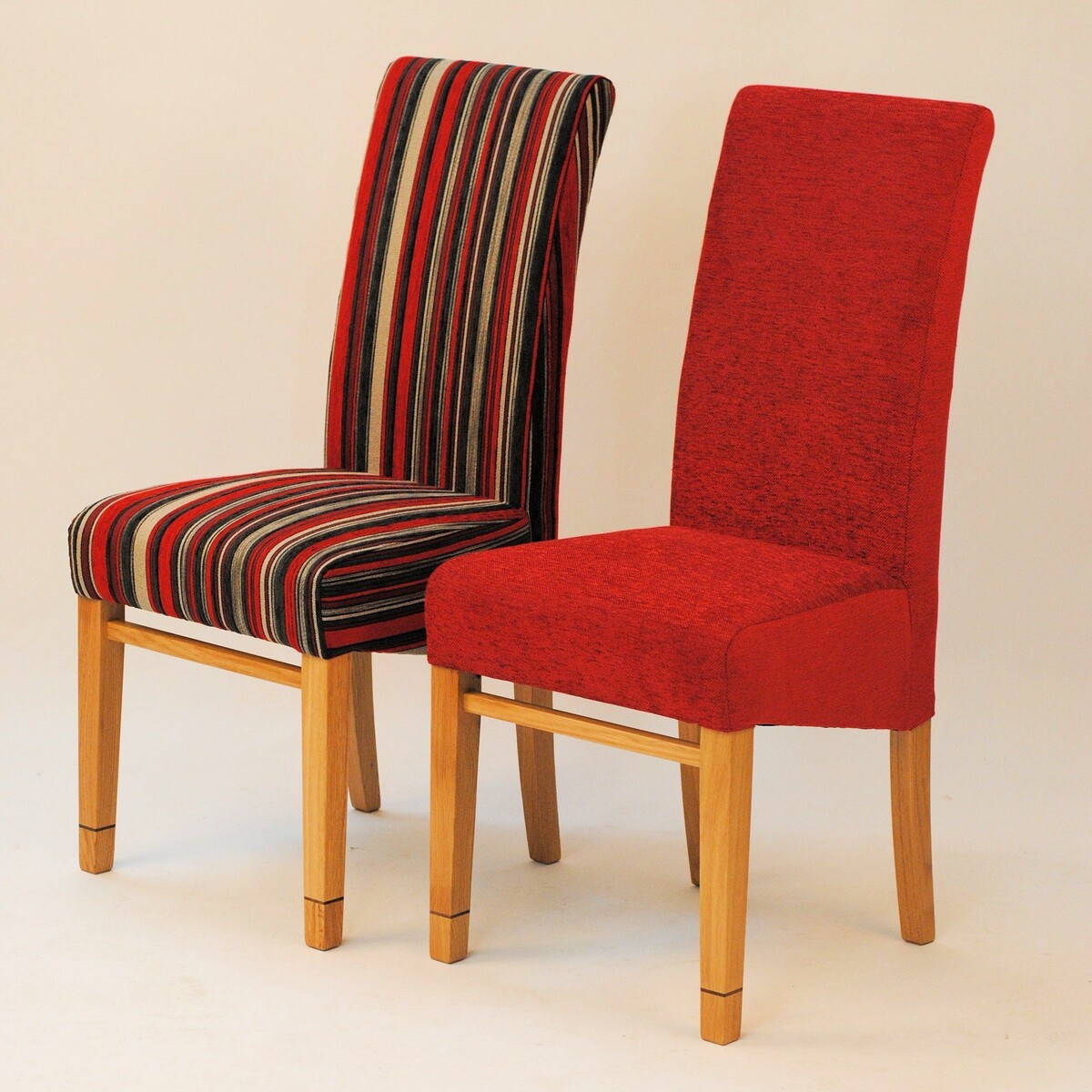
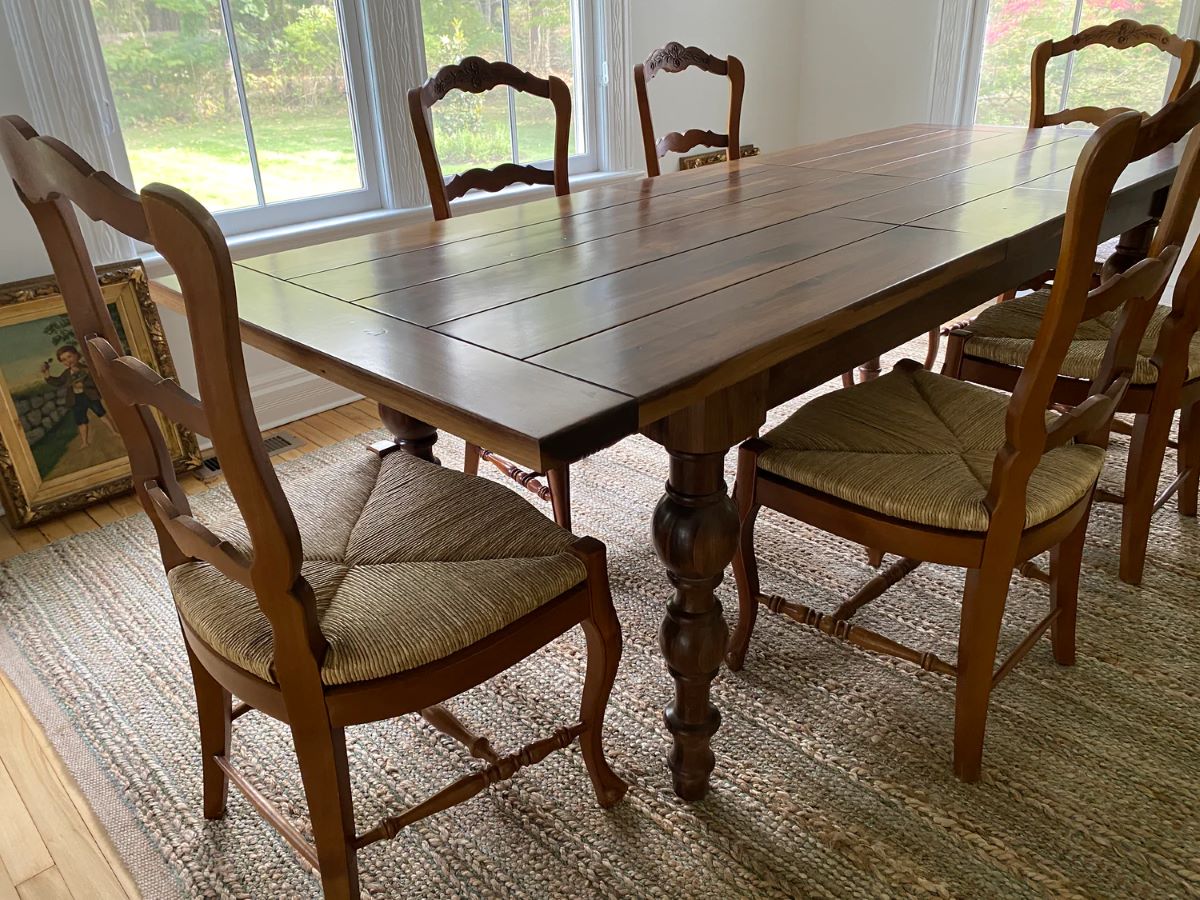
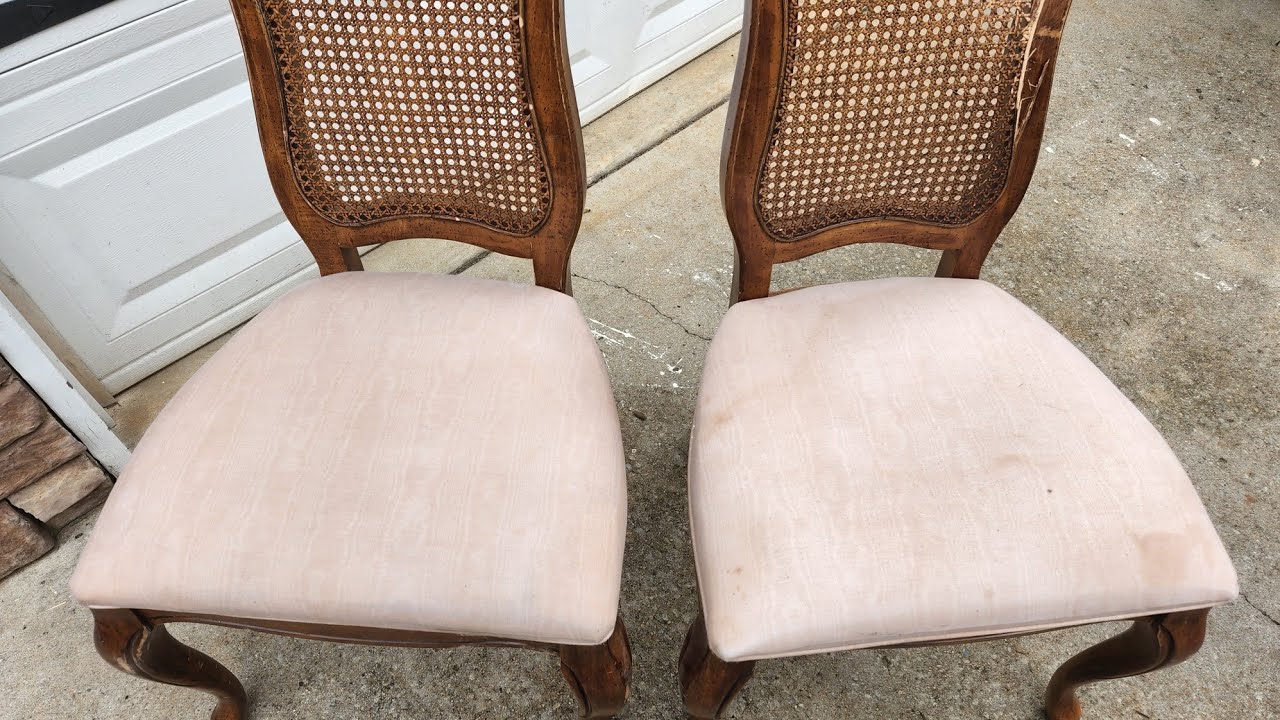
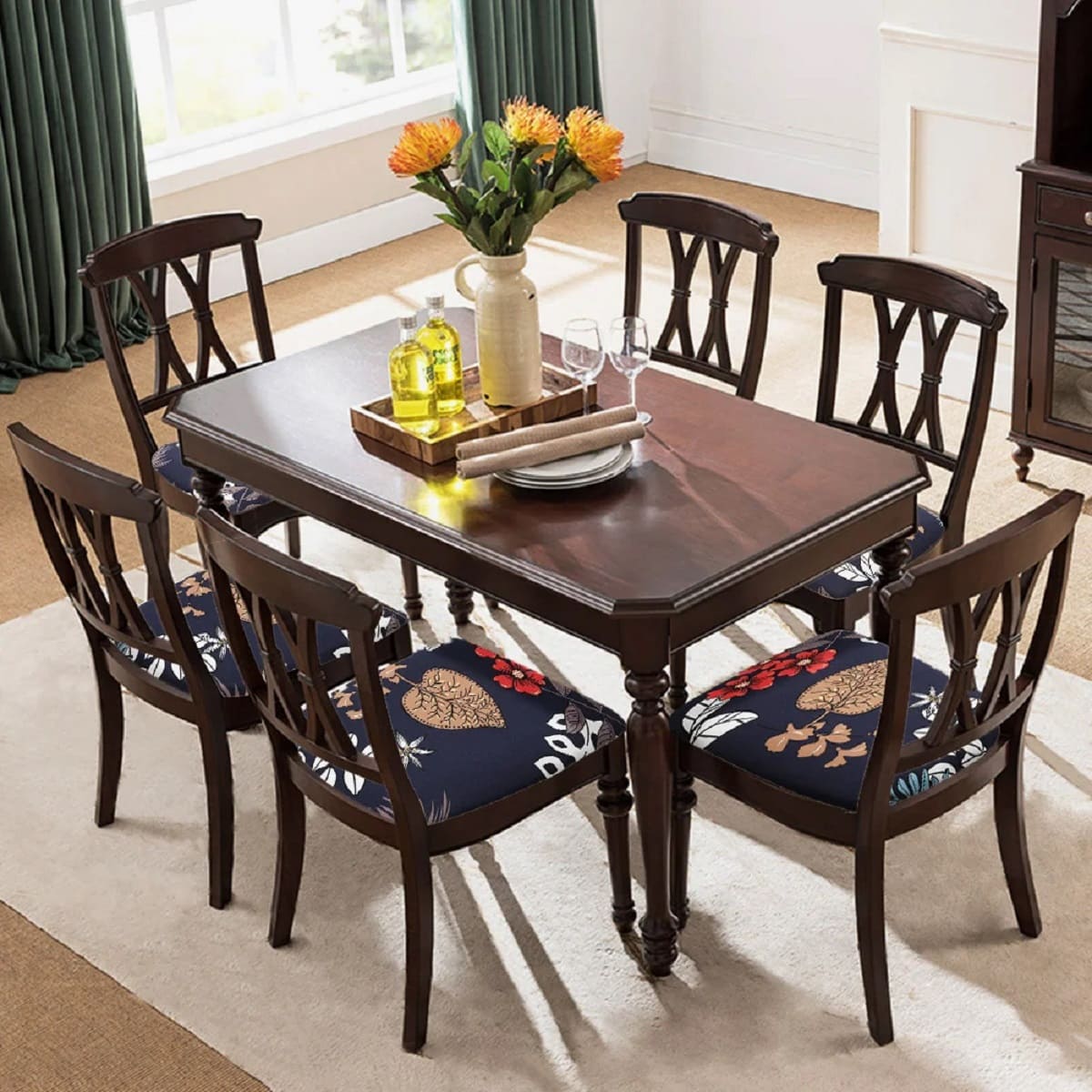
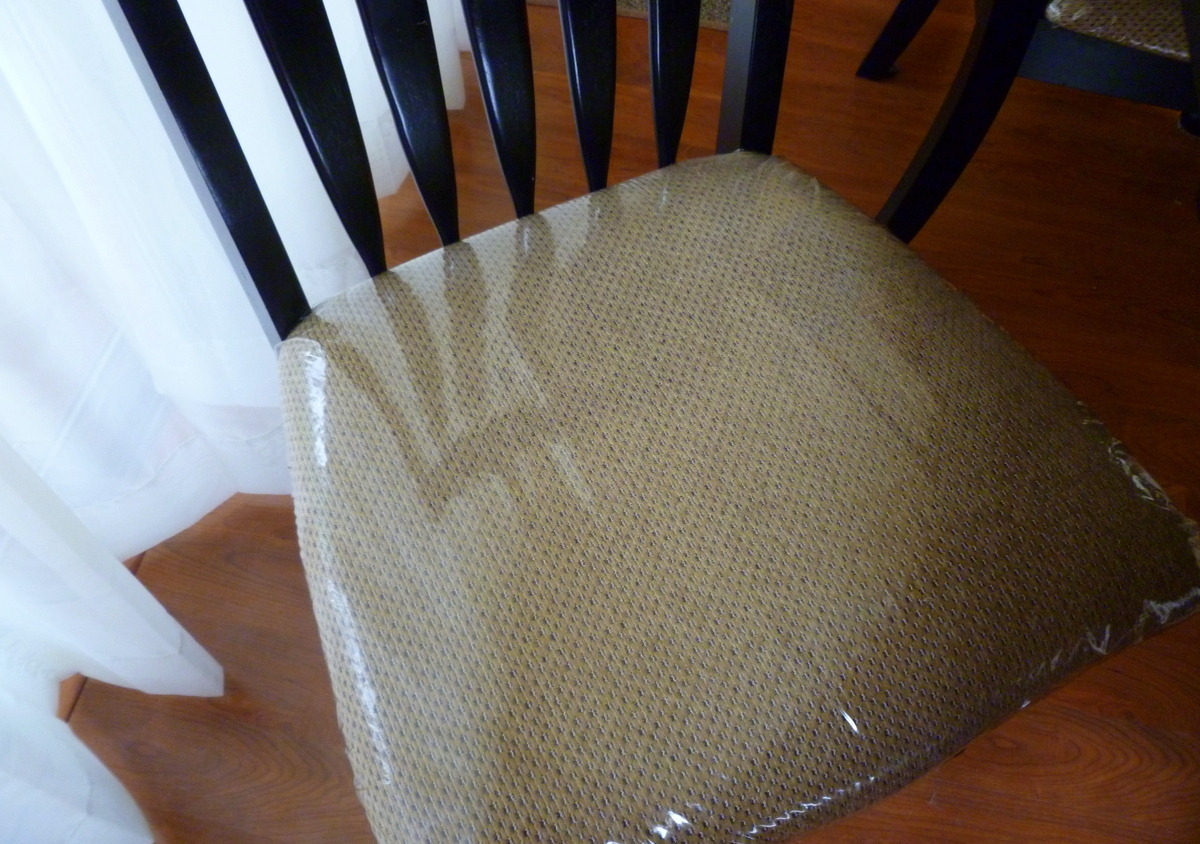

0 thoughts on “How To Construct Wicker Dining Chairs”